Contents
Photos of magnolia tree and flowers show one of the first blooming plants of spring. In nature, there are about 200 species of flowering tree, which, under natural conditions, grows in mountain forests and on the edges. Being a mesophyte plant, magnolia prefers a moderately humid and warm habitat.
What does magnolia look like?
Magnolia can be an evergreen or deciduous tree, as well as a shrub. The bark of the branches is brown or gray. In height krupnomer reaches from 5 to 30 m, grows sprawling. The leaves are elongated, glossy, dense, dark green.

According to the photo and description of the magnolia tree, its large flowers, depending on the species, can be:
- pearl white;
- cream;
- pale pink;
- bright yellow;
- red;
- purple.
Petals in shape can be wide or narrow, arranged in several rows of 6-12 pieces.
Where does magnolia grow?
Under natural conditions, a flowering tree grows in Japan and China, North America. Most species prefer tropical and subtropical climates. In Europe, a flowering plant appeared only in the 18th century.
A beautifully flowering tree, as a park culture, is grown on the coasts of Sochi, the Crimea, and the Caucasus.
With the development of breeding and the emergence of cold-resistant varieties, magnolia began to grow in Our Country, in regions with a colder climate. An exotic tree grows in the botanical gardens of Moscow and St. Petersburg. Saplings for the middle zone of the country can be found on sale, and planted in private gardens.
How fast does magnolia grow?
Magnolia is a long-liver among flowering plants. Differs in slow growth. Annual growth can be from 5 to 20 cm. In one place, under favorable conditions, it can grow for 100 years or more.
How Magnolia Blooms
Many varieties of magnolia tend to bloom even before the foliage blooms and the departure of pollinating insects. Depending on the type and variety, the flowers reach from 8 to 25 cm in diameter. Large flowers look especially elegant on bare branches.
The intensity of the color depends on the air temperature: the higher it is, the brighter the color. In the evening, the petals close, and the inner ones are very tight. Closed elongated buds resemble unblown tulips. After flowering, fallen petals create a colorful carpet on the soil around the tree.
When and how magnolia blooms in Sochi
Blooming magnolias of various types can be observed in Sochi from the earliest spring. Depending on weather conditions, the first flowers bloom in late February – early March. Later flowering continues until the end of summer.


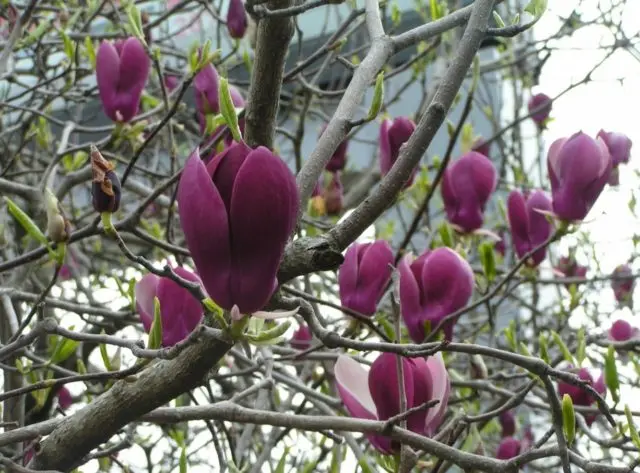
A photo of how magnolia blooms in Sochi can be taken not only in many parks and alleys, but also in the botanical garden and arboretum.
When and how magnolia blooms in Crimea
The climate on the southern coast of Crimea is well suited for a delicate flower. The charming flowering of deciduous and evergreen varieties of exotic plants continues all spring and summer, replacing each other. The first photo of a blooming magnolia can be taken as early as March.


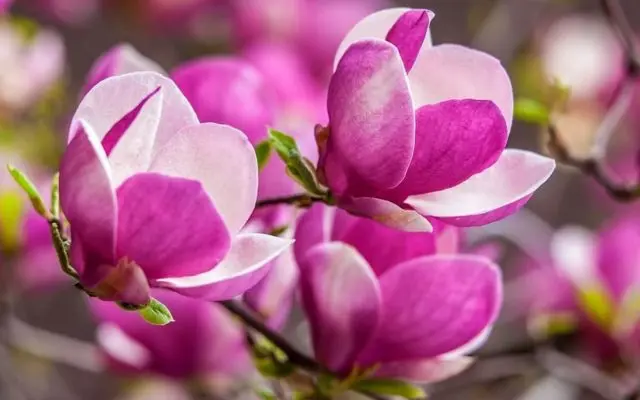
One of the early blooming magnolias of the Crimea is Sulanga. Magnolias do not tolerate the neighborhood of other plants, so nothing distracts the eye from the exquisite and luxurious flowers on the coasts and in parks.
How many magnolia blooms
Depending on the growing region, magnolia begins to bloom from late February to early May. At the same time, there are many flowers on the tree in different stages of development, so magnolia blooms from 20 days to several months.
What does magnolia smell like?
The aroma of flowers is intense, heady, vanilla-citrus. It is not recommended to pick branches with flowers and put them indoors. With prolonged inhalation of a strong aroma, it causes discomfort, headaches and nausea. To improve well-being, it is enough to remove the flowers and ventilate the room. Some varieties are odorless.
Sweet, thick, with a slight astringency, the fragrance is used by perfumers to create premium perfumes.
What year does magnolia bloom after planting?
The flowering time of magnolia depends on the method of reproduction and origin. Species magnolias bloom in the 10-14th year, in some cases, flowering for the first time occurs only after 30 years of the tree’s existence. Hybrids bloom much earlier – 4-7 years after planting. Plants grown from seeds bloom later than those grown from vegetative propagation.
Types and varieties of magnolia
The genus of flowering plants of the Magnolia family was first named by the French botanist Charles Plumier in 1703, in honor of another French botanist, Pierre Magnol. Since then, about 240 plant species have become known, which are divided into evergreen and deciduous.
Large-flowered – one of the most popular among evergreen varieties. Under natural conditions, it reaches 30 m in height. The crown is in the form of a wide pyramid, densely leafy. The leaves are thick, leathery, glossy, up to 25 cm long, up to 12 cm wide. From a distance, the plant may resemble an evergreen rhododendron.
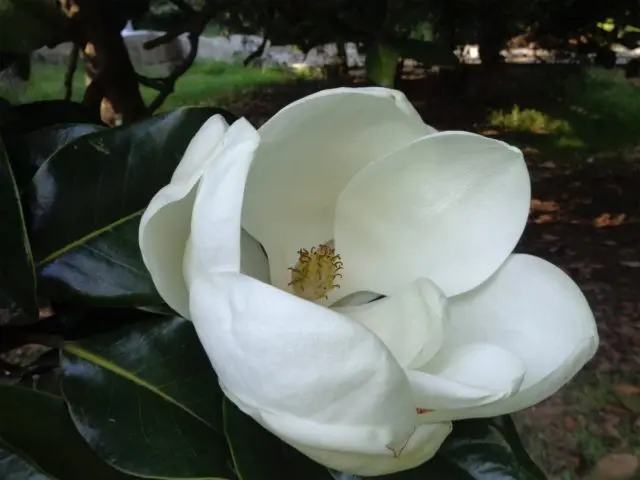
Huge flowers of a milky-white shade have the form of a bowl. The species is characterized by long flowering, which lasts all summer. The number of simultaneously blooming flowers on a tree is small. The flowers are very fragrant. It belongs to the most ancient and hardy species among the evergreens.
Sulanga is one of the most common and most beautiful hybrids grown on the Black Sea coast of Our Country. The deciduous shrub was bred in France in 1820 from the naked and lily-colored varieties. In height, in the southern regions, it grows in the form of a small tree up to 12 m tall. The leaves are decorative, large, shortly pointed, smooth above, slightly pubescent below.
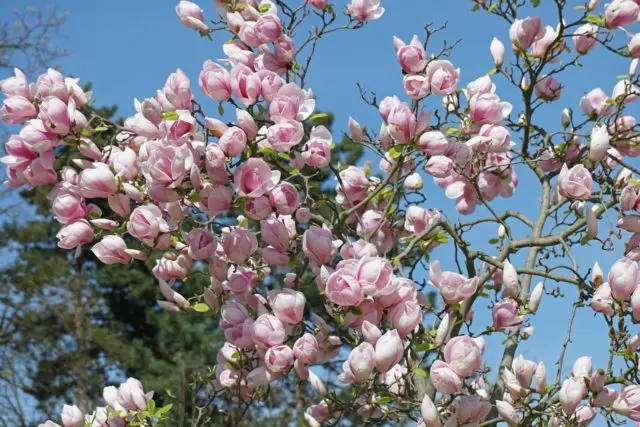
In the photo and in the description of the magnolia shrub, you can see that the flowers of the hybrid are large, in garden forms they reach 25 cm in diameter. The shape is goblet, the petals are massive, dense, the color of the outer part varies from pale pink to deep crimson, and the inner part is white. Flowering begins at the same time as the leaves open.
Frost-resistant varieties of magnolia
To frost-resistant varieties include only deciduous plant species. The peculiarity is that the plant acclimatizes gradually. With each year of cultivation in an unusual climate, frost-resistant varieties become more hardy. Work on the introduction and movement of an exotic plant to the Northern regions began in the 70s of the last century.
Pointed – one of the most winter-hardy species, its homeland is North America, where it is also called the “cucumber tree” because of the shape of the fruit. The species became the progenitor of many varieties and hybrids. Large, deciduous tree, grows up to 30 m in height, the thickness of the trunk of an adult specimen reaches 1,2 m.
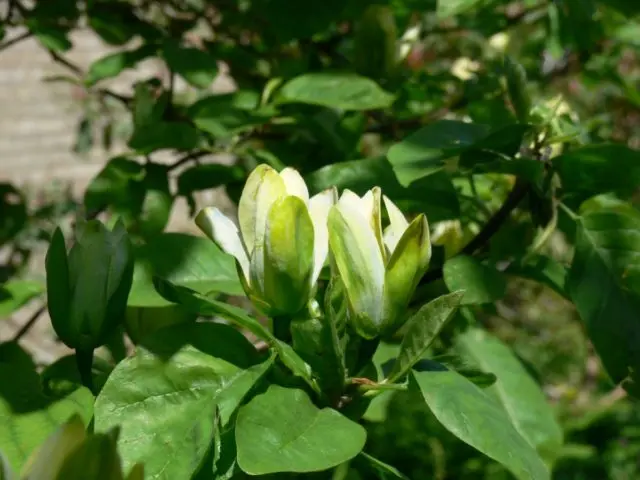
Photos and descriptions of the pointed magnolia tree show small flowers that have a yellow-greenish color and may be invisible against the background of large foliage.
Kobus is a deciduous tree native to Japan, about. Hokkaido. Under natural conditions, it grows up to 25 m in height, in culture – no higher than 10 m. The crown is round-tent-shaped, spreading out, reaches 6 m in diameter. The leaves are large – up to 13 cm in length, spiky, intense green. In the photo of how the Kobus magnolia blooms, you can see milky-white flowers, about 10 cm in diameter.
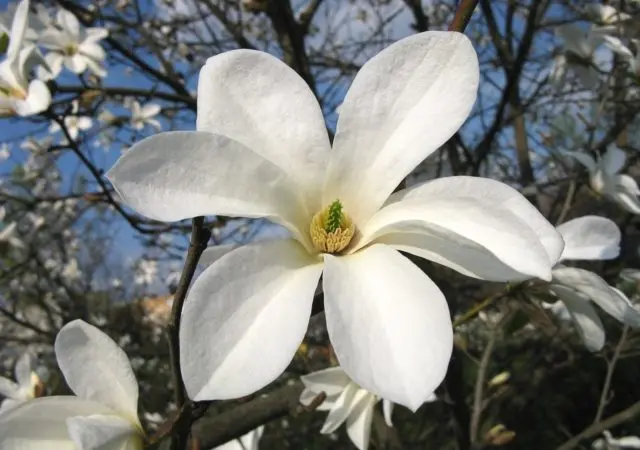
Flowering begins in mid-spring and lasts about 2 weeks. The most drought-resistant of other crops acclimatized for cold regions.
Siebold is a deciduous shrub or tree up to 8 m in height. The only species that grows in Northeast China. An adult plant is able to tolerate winter temperatures down to -39 ° C. The crown is spreading, growing to 7,5 m in diameter. The leaves are large, elliptical. Blooming flowers are saucer-shaped. Petals are white, numerous stamens are red-crimson. In diameter, the flower reaches 7-10 cm.
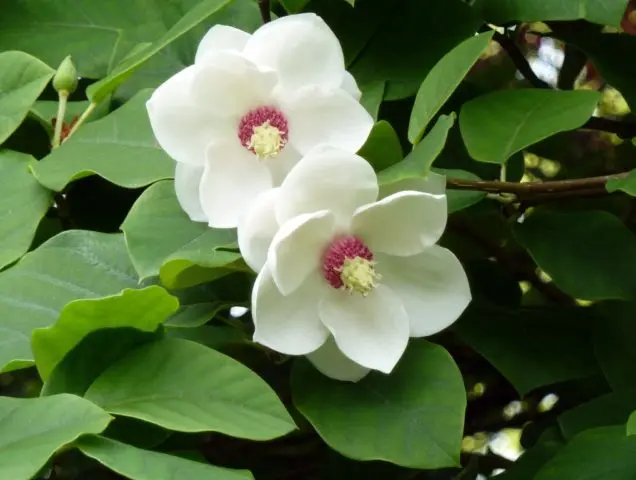
Flowering begins after the leaves open. Photos of magnolia in bloom can be taken in mid-May until June. May re-bloom in late summer.
Dwarf varieties of magnolia
Magnolia is usually a large plant, so trees that do not reach a height of 3 m are considered small. Given their slow growth, these trees reach their maximum height in 12-15 years, so they are well suited for small gardens.
stellate – deciduous shrub or low tree up to 2,5 m in height with a spherical crown. The leaves are elongated, oval, up to 12 cm long. It features narrow, ribbon-like petals of a snow-white color. The flower grows up to 10 cm in diameter.
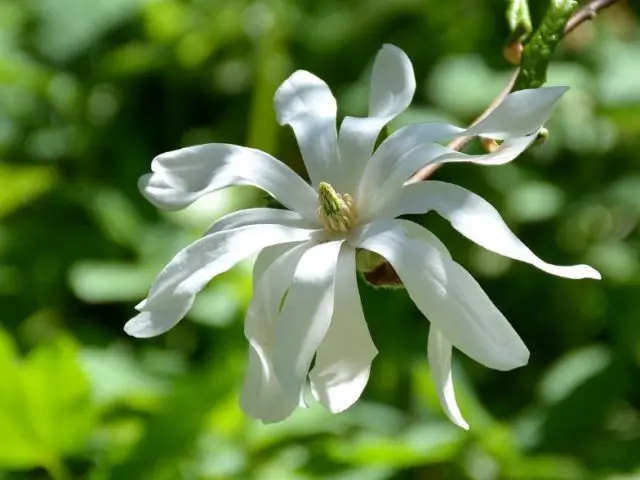
It blooms long before the appearance of leaves at the onset of + 15 ° C, much earlier than other species. It blooms for a long time, in terms of frost resistance it is inferior to the Kobus species.
Figo – an evergreen shrub with a spherical crown shape, from 1,8 to 3 m high. For a sweet aroma similar to a banana, the shrub is often called banana. Young leaves are slightly pubescent, adults without pubescence, glossy, dark green in color, 4 to 10 cm long. Thanks to the beautiful foliage, the shrub looks decorative even without flowers.
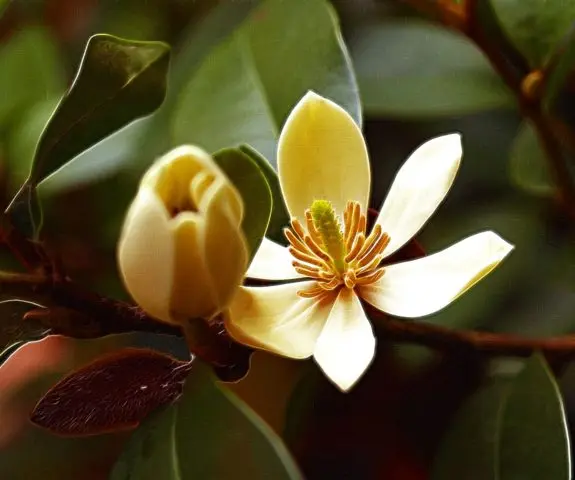
The yellowish-green flowers consist of 6-9 petals and bloom from April to June.
Lebner – a hybrid obtained from crossing the species Star-shaped and Kobus, has been growing only in culture since 1923. The shape of the crown can vary from a shrub type to a small tree. The leaves are large, elongated, oval.
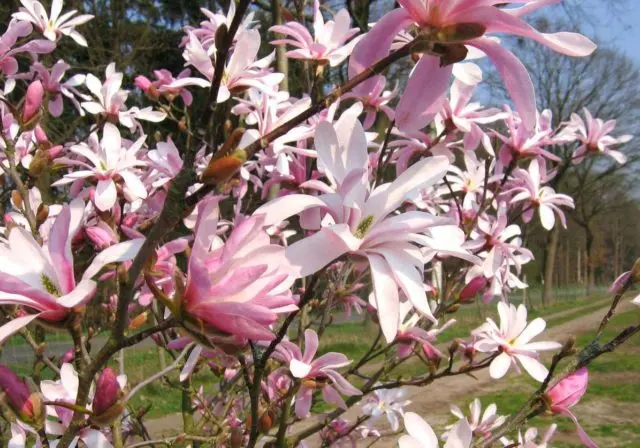
Flowers – from white to pink, with 9-12 petals. Blooms in the 7-10th year. Flowering is very abundant, before the leaves bloom. At the same time, many flowers bloom on the branch.
The use of magnolia in folk medicine
Magnolia essential oil is used in aromatherapy. Unlike the aroma of a living bouquet of flowers, which causes dizziness and headaches, the oil has a calming effect when the dosage is observed.
Essential oil is obtained from leaves and flowers, its smell eliminates headaches, including migraines, and relieves general body fatigue. Improves the emotional background, increases personal self-esteem.
Preparations with magnolia leaf extract lower blood pressure in hypertension, reduce pain in the heart area. Massage with magnolia oil has a relaxing effect on the muscles, relieves pain in the joints.
Interesting Magnolia Facts
Magnolia blossom in the southern cities has become a real holiday. Not only locals come to admire ancient exotic flowers, but also guests from colder regions come.
There are legends about magnolia and there are various facts, for example:
- about 40 plant species are listed in the Red Book as endangered;
- in the 50s of the last century, hybrids were bred, which were called female names;
- the exquisite plant flourished on Earth even before the appearance of bees;
- magnolia is a poisonous plant;
- in the old days, the leaves of the plant were eaten only by the emperor of China, as a delicacy;
- the flower that appeared for the first time in Europe amazed the public so much that all the ladies wanted to have it. A real flower fever began, gardeners stealing flowers from each other and selling them for the price of a diamond jewelry;
- an elegant flower is given to a beloved with a promise of eternal love;
- a girl who sees magnolia bloom can count on a quick marriage.
Magnolia flowers are not cut not only because of their intoxicating aroma, but also because of the belief that the one who cuts off the petals and branches will be punished in the form of misfortune. A flowering tree in the yard brings prosperity and wealth to the inhabitants of the house.
Conclusions.
Photos of magnolia tree and flowers do not leave anyone indifferent. The inhabitants of the northern regions wish to have a southern tropical plant in their gardens. Gradually this becomes possible. Magnolia is revered as an exquisite, delicate, sophisticated plant that bloomed on the planet even before the advent of civilization.









